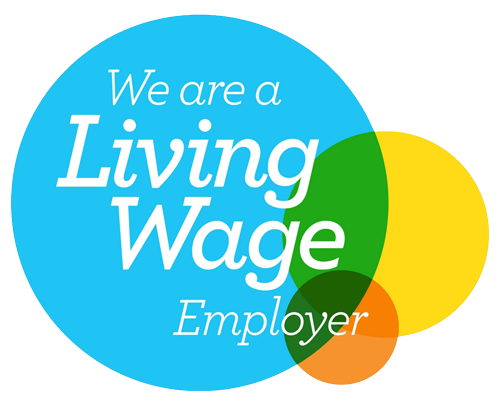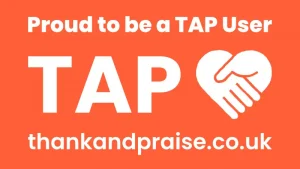Workforce Pressures
The social care sector and social care workforce are facing increasing challenges. This page provides a summary of the latest data and links to more detail about the workforce in England.
Skills for Care Report
In October 2023, Skills for Care published its latest annual report on the state of the social care sector and workforce in England.
The key findings for 2022/23:
- There are 1.635 million filled posts (an increase) and 152,000 vacant posts. The vacancy rate is 9.9% but as high as 12.1% in London.
- The reduction in vacant posts since 2021/2022 appears to have been largely helped by the 70,000 international recruits who arrived to work in social care between March 2022 and March 2023, compared to 20,000 in the same period the year before and 10,000 the year before that.
- The turnover rate is stil lquite high at 28.3% (down from 28.9%).
- The new starter rate is 33%, up from 31.2% in 2021/22.
- 59% of recruitment was from within the adult social care sector.
- 81% of the workforce were female.
- If the adult social care workforce grows proportionally to the projected number of people aged 65 and over in the population, the number of total posts would need t oincrease by 25% (440,000 additional posts) by 2035.
CQC State of Care Report 2023
CQC published its annual State of Care report in October 2023. While outlining many of the issues we are seeing in the sector, the report has unhelpfully adopted the language of market terminology to try to explain that inequities are fuelled by providers not delivering publicly funded care because it is ‘less profitable’. Let us be absolutely clear, the reality is that providers are not able to provide care at the rates that local authorities can pay, nor can they provide quality services at these unsustainable rates. They cannot staff services where they do not have enough funding to pay staff, nor can they innovate and invest in buildings and technology to ensure that we have care services we are proud of and are fit for the future, as well as for the present. They are also unable to deliver the services those who draw on their services want. The language of profit, and the extraction of profit have no place in the delivery of public services. You can read our full response to the report here.
In terms of workforce pressures, CQC found:
- Over 50% of providers struggle to recruit, and 31% face retention issues.
Staff turnover in care homes decreased from 37% (Jan-Mar 2022) to 29% (Apr-Jun 2023). - Ethical concerns have risen for international recruitment, with a 4x increase in referrals for modern slavery and exploitation (2022/23) (now 37).
- London’s care home staff turnover rate is 20%, lower than the England average of 29% (Apr-Jun 2023).
- Services that successfully develop career progression and staff training have higher retention rates. The same goes for providers that develop wellbeing initiatives to retain staff and avoid using agency staff. Examples include offering flexibility such as part-time working, engaging with the community, and supporting staff with childcare or supporting them through the menopause.
Hft Sector Pulse Check for 2023
Hft’s annual Sector Pulse Check for adult social care. It highlights some of the significant financial and workforce challenges facing providers.
- Workforce costs were the most significant financial pressure for adult social care providers in 2023. 79% of providers reported that LA fees did not cover costs associated with the increased National Living Wage.
- Due to staffing shortages:
- 44% of adult social care providers turned down new admissions.
- 18% had to close services.
- 54% increased agency use.
UK Poverty 2024 - Joseph Rowntree Foundation
The Joseph Rowntree Foundation has published stark findings of unacceptably high levels of poverty – particularly for those caring for others or those accessing adult social care.
Those who have social care needs have been particularly badly hit:
- Disabled people – in 2021/22, 31% of disabled people were in poverty. This was even higher (38%) for people with a long-term, limiting mental health condition. Higher poverty rates for disabled people are partly due to the additional costs associated with disability and ill health and partly due to the barriers to work they face.
- Informal carers – 28% of people with caring responsibilities were in poverty in 2021/22. Nearly one in ten adults were informal carers, with six in ten of these being female. Informal carers face a financial penalty, because of their limited ability to work, with unpaid social-care givers experiencing an average pay penalty of nearly £5,000 a year, reaching £8,000 year after six years.
The report paints a very grim picture for those who need care and one that can only improve with proper investment in adult social care and local government by central government.
ADASS Council Data
The Association of Directors of Adult Social Services (ADASS) has drawn upon several surveys they have run with their members over the last year in their 2024 Spring Budget representation. This highlights the significant underfunding of local government which is manifesting in workforce pressures and lack of available services for people:
- There is a £4bn gap in council funding over the next two years.
- In 2022/23, 63% of councils overspent on their adult social care budgets. The proportion of these councils using reserves as a source of funding to address overspends has increased from 37% in 2021/22, to 72% in 2022/23.
- In 2023/24, 83% of councils are projecting to overspend by an average of 3.5%. This is despite an increase of 8.6% in adult social care budgets, indicating the growing demand and pressures.
- In autumn 2023, 49% of Directors indicated that there is only limited availability of preventative services focused on reducing the number of avoidable admissions in their local area.
- In autumn 2023, 63% either disagreed or strongly disagreed that step-up intermediate care capacity for people in the community experiencing a crisis or other deterioration in their physical and/or mental health and wellbeing is widely available in their local area.
- 470,576 people are still waiting for some form of assessment, direct payment or care and support to begin or a review of their care needs.


